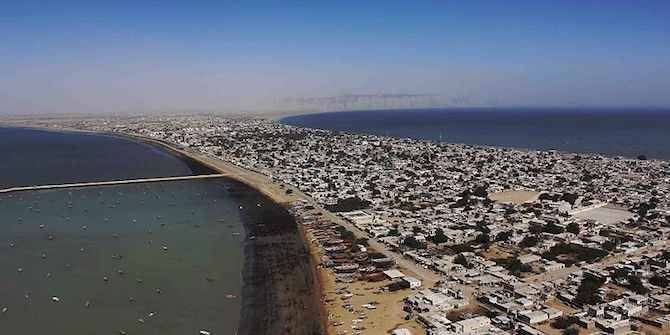When many of India’s poor move from their rural homes to the country’s packed cities, they remain registered in their village. Here Ankush Agrawal (Indian Institute of Technology Delhi) and Vikas Kumar (Azim Premji University, Bengaluru) explain the reasons why India’s urban poor keep a foot in villages and its policy consequences.
The Covid-19 pandemic has brought to the fore the continued attachment of the urban poor to rural India as their home. This is both a cause as well as a consequence of the poor management of urban India.
Even after years of living in cities, the poor often lack reliable access to basic needs such as food and shelter. Inter-state migrants also often find themselves at the receiving end of ethnic politics. The exodus of people of northeastern origin from Karnataka in 2012 and north Indians from Maharashtra in 2008 are cases in point. In contrast, villages offer the urban poor a sense of security by virtue of being the place they can always call home.
The relationship between migrants and villages is symbiotic. Villages try to retain the names of migrants as members of the local community in all possible government records, including census and electoral rolls, to boost their bargaining power within the local political economy and enhance access to headcount-linked welfare funds. People from as far as Mumbai and Bengaluru travel to states like Uttar Pradesh and Bihar to vote in panchayat (rural local body) elections.
Migrants too have incentives to get counted at “home” in various government records. Lacking access to property rights in urban India, they strive to maintain claim upon agricultural land, which guarantees minimal access to food and employment, and membership of their native village, where they can seek shelter during crises. (The possibility of return to villages undermines the resolve of the poor to fight to the end for their rights in urban India.) Stringent restrictions on the use and sale of agricultural land too force migrants to maintain documentary connection with villages where they may have property. In several states, residents of rural areas or certain rural pockets enjoy preferential access to public employment and other benefits. This adds to the incentive to keep a foot in the village.
Communities and families believe that once headcount-linked benefits are reduced, the government will not increase the allocation of, say, ration cards or MGNREGS job cards at a short notice when migrants return during economic downturn or political crises. As a result, they try to retain migrant names in government records.
Even the well-to-do find it beneficial to retain their membership of village communities and ownership of agricultural land. They can reduce their tax burden by reporting their unaccounted income as agricultural income that is non-taxable.
The attachment of migrants in urban areas to villages has policy implications. A fraction of migrants is likely to be double counted, both in their places of origin and work, which results in the overcounting of rural population. At the same time, ethnically different migrants and slum dwellers in urban areas are likely to be undercounted. Both these suppress the urban population share and in turn affect the distribution of legislative constituencies and resources between urban and rural areas. As a result, urban planners and administrators are both poorly informed as well as underfunded. Indeed, images of millions walking back home, reported widely in the media, lead one to doubt if the government was aware of the size of the migrant population in urban India that continues to have roots in villages.
The 2011 Census of India reported that “For the first time since Independence, the absolute increase in population is more in urban areas [than] that in rural areas.” Urban areas accounted for a little more than 30 per cent of India’s population in 2011. But this is widely believed to be an underestimate as the census follows restrictive criteria to identify urban settlements.
According to the census an area is considered urban if it is a statutory town (meaning it has a municipality, municipal corporation, cantonment board, or notified town area committee/Nagar Panchayat) or a census town (defined as a village having at least 5,000 population, 75 per cent of male main workers engaged in non-agricultural activities, and population density exceeding 400 per square kilometers).
Estimates that relax one or more of the census criteria or use more recent techniques that rely on the assessment of, say, night light data suggest that India’s urban population share could be as high as 70 per cent. In fact, even the Economic Survey 2016-17 released by the Union Ministry of Finance questioned the census in this regard. The Economic Survey showed that the share of urban population is highly sensitive to the threshold criteria of the census and argued that “traditional measures are inadequate” during periods of rapid urbanisation.
Discussions on urbanisation in India have focused mostly on definitional problems, the reluctance of the government, politicians and other interest groups in acknowledging urbanisation and the consequences of the growing and often unacknowledged urbanisation. The problem of counting the urban population, however, is not restricted to arriving at an appropriate definition and finding suitable measures. The possible errors in census estimates due to double-counting and under-counting of migrants are widely overlooked.
Under the extended de facto (synchronous) method of enumeration followed in India, people are counted where they are during census. While this design presumably restricts double-counting, it often fails to prevent even long-term migrants from being counted both in their places of work and origin. This is explained partly by the poor training of enumerators, who do not understand the nuances of the complex enumeration method. The continued attachment of the poor to villages discussed above, however, plays a bigger role.
This problem can be addressed in the next census through better training and supervision of enumerators, awareness campaigns to sensitise respondents and a better understanding of sub-groups of population, such as first generation, low-income migrants who are vulnerable to double-counting in villages and undercounting in cities. If this problem is addressed, the population share of urban areas, as well as economically vibrant (and more urbanised) southern and western states that are net recipients of intra-national migrants, will increase.
This article gives the views of the authors, and not the position of the South Asia @ LSE blog, nor of the London School of Economics. Featured photo: A group of men on their way to work. Credit: Sujeeth Potla, Unsplash.








good job
Kheti Kare